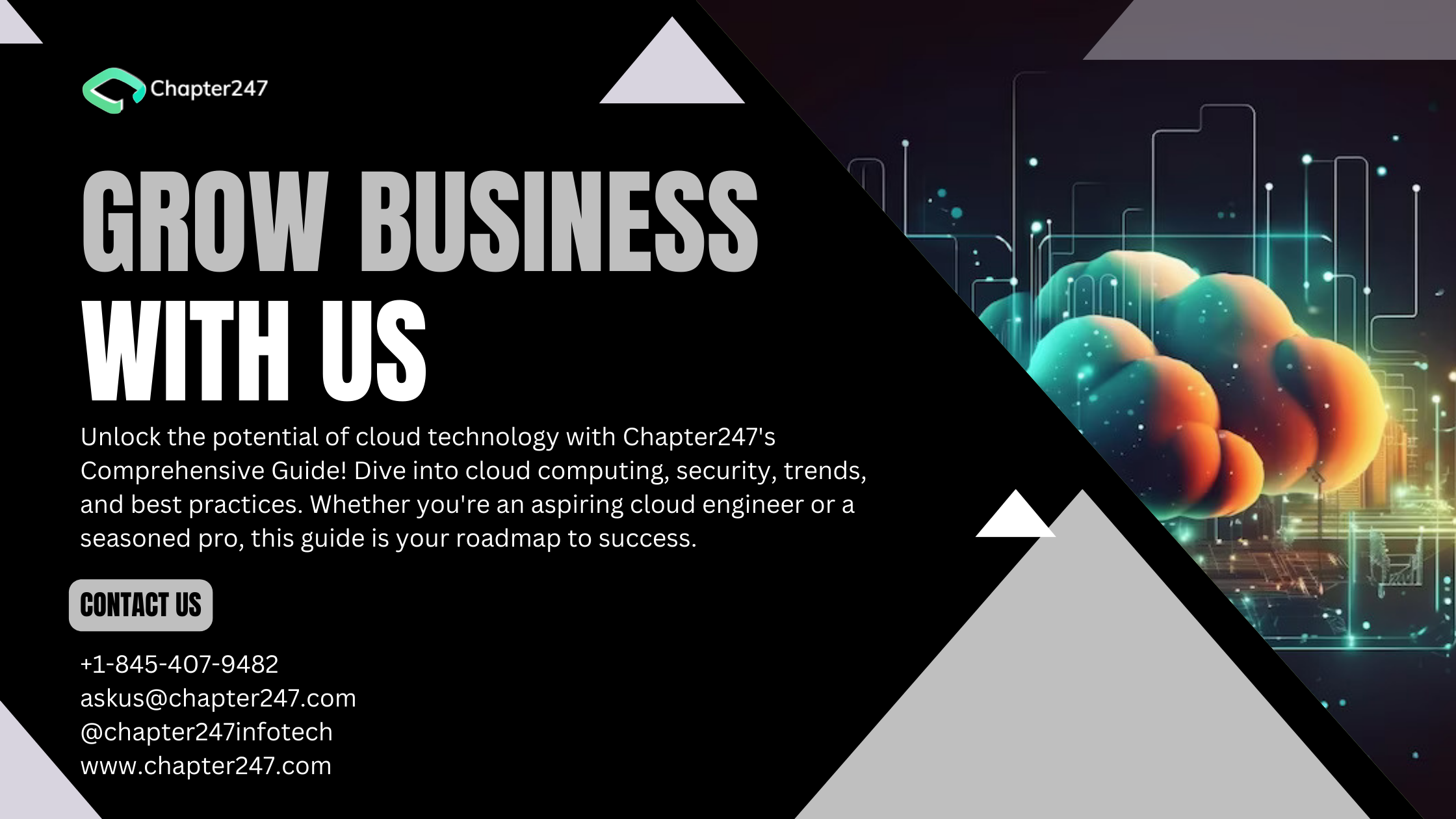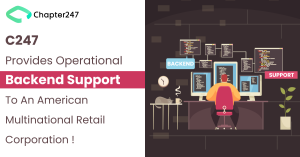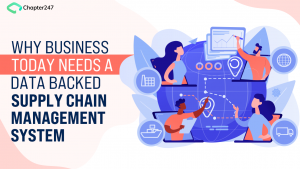In today’s digitally transformed world, the realm of computing has undergone a Revolutionary shift – a shift so profound that has fundamentally altered the way individuals businesses. and Industries operate. According to Gartner, the worldwide public cloud services market is expected to grow by 18.4% in 2023, reaching a staggering $506.2 billion dollars. The cloud has become the cornerstone of the modern technology digital landscape and provides unprecedented opportunities for Innovation and growth.
Table Of Content
- Introduction
- Understanding Cloud Computing
- Brief History of Cloud Computing
- Core Concepts of Cloud Computing
- Infrastructure as a Service(IaaS)
- Platform as a Service(PaaS)
- Software as a Service(SaaS)
- Benefits of Cloud Computing
- Cost Savings
- Scalability and flexibility
- Accessibility and mobility
- Security and reliability
- Innovation and Collaboration
- The Role of a Cloud Engineer
- What Is a Cloud Engineer?
- Skills and Qualities of a Cloud Engineer
- Technical Proficiency
- Problem-Solving Skills
- Security Knowledge
- Cloud Vendor Expertise (AWS, Azure, Google Cloud, etc.)
- Responsibilities of a Cloud Engineer
- Cloud Infrastructure Design
- Deployment and Automation
- Monitoring and Optimization
- Planning Your Cloud Strategy
- Assessing Your Organization’s Needs
- Choosing the Right Cloud Service Model
- Selecting the Appropriate Cloud Vendor
- Budgeting and Cost Management in the Cloud
- Cloud Security Best Practices
- Future Trends in Cloud Engineering
- Conclusion
- FAQs
Introduction
Imagine a world where businesses no longer need to invest in expensive data centers or worry about the limitations of physical infrastructure. A world where software applications and data are readily accessible from anywhere on the planet and the processing power of a global network of servers is at your fingertips. This is the promise of cloud computing, and it’s a promise that has already become a reality for Millions.
A recent report by Flexera reveals that 93% of enterprises have a multiple strategy indicating the white spread adoption of cloud technology across different industries..Leading cloud providers such as AWS( Amazon Web Services), Microsoft Azure, and Google Cloud, collectively operate thousands of data centers worldwide making cloud resources accessible from virtually anywhere.
As you journey through this article we will explore the fundamental concepts of cloud engineering, the pivotal role of cloud engineers, strategies for cloud adoption, and best practices for optimizing cloud resources. We will also take a deep dive into the real-world case studies, emerging trends, and the evolving landscape of cloud Technology. so faster in your seat belt because we are about to start on an exhilarating journey of cloud engineering’s vast universe!
Understanding Cloud Computing
In this section, we will unravel, the fascinating world of cloud computing, tracing its historical evolution, exploring its core concepts, and highlighting the unreal benefits eat brings to individuals and Organisations alike.
Brief History of Cloud Computing
Cloud Computing might seem like a recent innovation but its roots extend deep into the history of computers. Let’s take a journey through time:
- Cloud’s Birth: The concept of cloud computing began to take shape in the 1960s when early computer scientists envisioned a “utility computing” model. However, it wasn’t until the 1990 that term “Cloud Computing” gained prominence.
- The Dot-Com Boom: The late 90s and the early 2000s Show the emergence of companies like Amazon and Salesforce, Which laid the foundation for cloud services. Amazon Web Services which is also known as AWS was officially launched in 2006, marking an important moment in cloud history.
- Explosive Growth: Over the past two decades, Cloud Computing has experienced exponential growth. today it underpins everything from social media platforms to advanced scientific research.
Core Concepts of Cloud Computing
Now, let’s delve into the core concepts that define cloud computing:
- Infrastructure as a Service(IaaS)
IaaS represents the foundation layer of cloud computing. it provides virtualized computing resources over the internet. IaaS enables consumers to scale computer resources up or down as needed, paying only for what they use. Users can choose from a variety of virtualized hardware components such as virtual machines and storage. for example Amazon EC2, Google computing, and Microsoft Azure virtual machines.
According to Gartner, the worldwide infrastructure as a service (IaaS) market grew 29.7% in 2022, to total $120.3 billion, up from $92.8 billion in 2021. Amazon retained the No. 1 position in the IaaS market in 2022, followed by Microsoft, Alibaba, Google, and Huawei.
- Platform as a Service(PaaS)
PaaS Cloud Computing is a stepfather by providing a platform that enables developers to build, deploy, and maintain applications without worrying about the underlying infrastructure. It provides tools and frameworks for software development, streamlining the coding process. PaaS 2 minutes tasks like application deployment and scaling, improving efficiency. For example Heroku, Google App Engine, and Microsoft Azure App Service.
The global platform as a service market size was valued at $44 billion in 2020 and is projected to reach $319 billion by 2030, registering a CAGR of 22.0% from 2021 to 2030.
- Software as a Service(SaaS)
Saas represents the top layer of cloud computing, offering ready-to-use software applications over the internet. Applications are accessible from any device with an Internet connection. Users don’t need to worry about the updates, or security patches from our hardware maintenance. For example, Google Workspace, Microsoft 365, Salesforce, and Dropbox.
The SaaS market increased from $31.4 billion in 2015 to an anticipated $1617.1 billion in 2022. That’s an increase of more than 5 times in just seven years. The SaaS market is anticipated to grow at its fastest rate between 2022 and 2023, reaching a value of $195.2 billion by year’s end.
Benefits of Cloud Computing
The adoption of cloud computing has brought about a multitude of benefits transforming the way businesses operate and individuals access services. late explodes some of these advantages:
- Cost Savings
Have you or your organization experienced cost savings through cloud adoption? because Cloud Computing can significantly reduce IT expenses. Organizations no longer need to invest in expensive hardware data centers and extensive IT stuff. Instead, they can pay for cloud services on a pay-as-you-go basis, optimizing costs.
- Scalability and flexibility
How has scalability improved your ability to meet business needs or personal projects? The cloud services offer unmatched scalability. Business can easily scale their resources up or down in response to changing demands. This flexibility enables rapid Innovation and growth.
- Accessibility and mobility
Has cloud-based mobility improved your work-life balance or remote work experience? Cloud services provide taxes to data and applications from anywhere within an internet connection, This mobility increases productivity allowing remote work and on-the-go access to critical resources.
- Security and reliability
Leading cloud providers invest heavily in security measures and data redundancy. They more often offer unique security features and compliance certifications, making it simple for companies to protect important sensitive information.
- Innovation and Collaboration
By making cutting-edge technologies easily accessible, cloud computing encourages creativity. Additionally, teams can collaborate online without regard to their physical location thanks to cloud-based solutions.
The Role of a Cloud Engineer
In this section, we’ll look into the crucial position of a cloud engineer and discuss their duties, competencies, and personal traits that set them apart in the fast-developing field of cloud technology.
What Is a Cloud Engineer?
Are you a Cloud Engineer or aspiring to be one? If yes, then first you need to know what it is. A technological expert tasked with building, deploying, and managing cloud infrastructure and solutions is known as a cloud engineer. The digital towers that contain our data and applications in the cloud were designed by them. Cloud engineers make sure that organizations take full advantage of cloud computing to boost productivity and creativity.
Skills and Qualities of a Cloud Engineer
To succeed in this dynamic area, Cloud Engineering requires a broad range of abilities and traits. Let’s examine the essential qualities:
- Technical Proficiency
Cloud platforms and services must be thoroughly understood by cloud engineers. It is crucial to be knowledgeable about programming languages, infrastructure as code (IAC), and cloud automation technologies. They serve as the link between the infrastructure and the code, enabling management and access to cloud resources.
- Problem-Solving Skills
How have your problem-solving skills contributed to successful cloud projects? It is crucial to have the capacity to troubleshoot and fix complicated technical problems. Optimizing resource utilization, enhancing performance, and assuring system dependability are common tasks given to cloud engineers. In this context, strong problem-solving abilities are essential.
- Security Knowledge
Security is a top concern in the cloud. Cloud Engineers must be well-versed in cloud security best practices, identity and access management (IAM), encryption, and compliance requirements. They play a crucial role in safeguarding sensitive data in the cloud.
- Cloud Vendor Expertise (AWS, Azure, Google Cloud, etc.)
Cloud Engineers often specialize in a particular cloud platform, such as Amazon Web Services (AWS), Microsoft Azure, Google Cloud Platform (GCP), or others. In-depth knowledge of the chosen cloud vendor’s services, pricing models, and best practices is essential.
Responsibilities of a Cloud Engineer
The cloud infrastructure of an enterprise depends on the work that cloud engineers do. Let’s look at these obligations in more detail:
- Cloud Infrastructure Design
Cloud engineers design the cloud infrastructure, choosing the best configurations and services to efficiently satisfy client needs. This entails developing scalable, dependable, and economical solutions.
- Deployment and Automation
They deploy and manage cloud resources, automating repetitive tasks through scripting and infrastructure as code (IAC) tools. This automation streamlines operations and enhances efficiency.
- Monitoring and Optimization
The efficiency and performance of cloud resources are regularly monitored and improved by cloud engineers. To make sure everything functions smoothly, they use analytics and cloud monitoring technologies.
Planning Your Cloud Strategy
Any cloud adoption journey needs a well-thought-out strategy in order to be successful. The key components of developing your cloud strategy will be covered in this section, including determining your organization’s needs, choosing the best service model, selecting the best cloud vendor, and putting in place efficient budgeting and cost management procedures.
- Assessing Your Organization’s Needs
The first step to a successful cloud strategy is realizing your organization’s particular needs. This entails assessing the current IT infrastructure, determining pain areas, and coordinating cloud solutions with corporate goals. According to Flexera, 78% of businesses view improving their current utilization of cloud resources as their top cloud objective.
- Choosing the Right Cloud Service Model
It’s crucial to choose the right cloud service model, whether it’s infrastructure as a service (IaaS), platform as a service (PaaS), or software as a service (SaaS). According to Gartner’s study, SaaS is the cloud market’s fastest-growing category, with a predicted growth rate of 16.6% by 2023.
- Selecting the Appropriate Cloud Vendor
Selecting the best cloud vendor is an important choice. Many different services are available from market leaders including Amazon Web Services (AWS), Microsoft Azure, and Google Cloud. According to Synergy Research Group, AWS continues to hold the greatest market share in the market for cloud infrastructure services at 32%.
- Budgeting and Cost Management in the Cloud
To prevent cloud cost overruns, effective budgeting and cost management are necessary. Through efficient governance and optimization, firms may save 30% on cloud computing costs, claims Gartner. Tracking and managing expenses can be made easier by using programs like AWS Cost Explorer or Azure Cost Management.
Cloud Security Best Practices
In a time of growing cyber threats, cloud security is of the utmost importance. Protecting data and applications in the cloud requires the implementation of strong security measures. By 2025, client misconfigurations will be at blame for 99% of cloud security breaches, predicts a Gartner analysis.
Organizations should follow best practices including continuous monitoring, encryption of data in transit and at rest, strict identity and access management (IAM) regulations, and security audits on a regular basis to reduce risks. A “zero trust” security approach, in which trust is never assumed but constantly confirmed, is also becoming more and more crucial in the context of cloud security.
Future Trends in Cloud Engineering
Cloud engineering is a field that is always changing due to new technology and shifting market conditions. As we look to the future, a number of significant developments are influencing cloud engineering. By 2025, 80% of enterprise IT, as predicted by IDC, will be cloud-based, underscoring the growing reliance on cloud technology.
As businesses look to improve performance, lower latency, and increase scalability in the cloud, trends like serverless computing, edge computing, and multi-cloud solutions should become more prominent. Investigate these fascinating advancements in cloud engineering to stay in the know.
Conclusion
In summary, this Chapter247 Infotech article offers a helpful road map for navigating the complex world of cloud technology. This manual provides readers with the information and insights required to succeed in the field of cloud engineering, from comprehending the fundamentals to mastering advanced ideas.

It has examined the origins, fundamental ideas, and advantages of cloud computing while putting light on the crucial function of cloud engineers. Additionally, it highlights how crucial it is for cloud adoption to have efficient planning, architecture design, security, and cost management. This manual is a priceless tool for staying ahead in this fast-paced industry as we embrace the upcoming trends in cloud engineering.
FAQs
- What is cloud computing, and how does it work?
Instead of employing local hardware, cloud computing makes use of internet-based resources (such as servers and software). Users can access these resources on-demand, typically through a web browser, enabling scalability and flexibility.
- What are the main cloud service models (IaaS, PaaS, SaaS)?
Cloud computing offers three primary service models. One of them is SaaS, which delivers pre-configured software, the second one is PaaS makes app creation easier, and the last one is IaaS gives virtualized resources.
- What are key cloud security considerations?
Data encryption, access control, compliance, monitoring, and incident response should all be prioritized. Users and cloud providers share responsibility for security, depending on the service model.
- How do businesses choose a cloud strategy and provider?
Crafting the right cloud strategy includes assessing organizational needs, understanding the budget, and defining goals. To choose a cloud provider, businesses should consider factors like the provider’s service offerings, pricing, data center locations, and custom support. Evaluating which cloud vendor aligns best with the company’s objectives and needs is important in making the right choice







